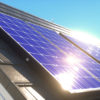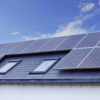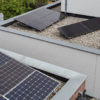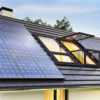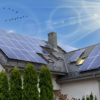With over 400 solar panel companies and well over 4000 installers in Australia, we sure have plenty to pick from. And, while this may seem like a good thing, it does come with one big disadvantage — choosing the right solar panels for yourself! After all, every manufacturer will say their panels are the best, even if they’re not. Many of them will also tout their Tier 1 status, but that doesn’t necessarily mean what you’d think it means. More on Tier 1 solar panels here.
Let’s not forget that solar is a high-tech industry with a lot of regulatory oversight — all of which can be very intimidating for first-time buyers. So, how do you decide upon the right set of panels for your house? Here’s a quick (but thorough) overview of what solar panel quality means and how to separate advertising fluff from the real stuff.
The Many Dimensions of Solar Panel Quality
A solar panel’s quality dictates how long it can produce as much energy as naturally possible. There are four variables that come into play here. Let’s take a look at each one of them.
Solar Panel Efficiency
Efficiency means how much sunlight received by a solar panel is converted into usable electricity. The best solar panels today have an efficiency rating of 23% with most being around 15%-20%.
It is worth mentioning here that solar panel efficiency is not the same as solar cell efficiency. The efficiency of a solar panel is usually 1%-3% behind that of the cells it is made up of.
For example, the Jinko Cheetah HC 72M solar array has a cell efficiency of around 22% but a panel efficiency rating between 19.3% and 20.3%. This is because some of the electricity from the cells is lost inside the solar panel due to inefficiencies in its connecting components and cell spacings.
Some manufacturers may tout their cell efficiencies while leaving out (or putting in fine print) panel details to grab more attention. So, do inquire about the panel ratings if you find them missing from the brochures or pitches.
Power Output
Closely related to a solar panel’s efficiency is how much power it will produce, which is expressed in watts. Most commercial and residential solar panel modules produce between 250 and 400 watt-hours of electricity.
A higher power output may mean one of two things. Either the panels have greater efficiency. Or, they are larger in size, i.e. have more photovoltaic cells on them.
It’s important to remember here that the power output rating is always given against ideal conditions. Meaning the solar array is positioned perfectly towards the sun and is receiving as much sunlight as possible. But, since these conditions won’t be met every time, you can only expect your solar panel to produce a certain percentage of the stated output at most times.
Potential Induced Degradation
Potential Induced Degradation, or, PID occurs inside solar cells due to stray currents. These may be caused by erratic voltage, humidity, and heat buildup. Left unchecked, PID can reduce its maximum power point and shunt resistance (path of least electrical resistance).
Responsible solar manufacturers will ensure their panels deter PID as much as possible. Measures here include good quality glass covers, strong cell encapsulation, and diffusion barriers between solar cells. PID can be further reduced by using an inverter which grounds either the positive or negative pole of the panel.
Corrosion Resistance
Solar panels have to put up with a lot. They have to continuously produce electricity while braving the elements, preferably for 25 years or more at one stretch. Obviously, they will need to be made as durable as possible. Their biggest foe here is corrosion.
Sea-winds can carry a lot of salt with them into many Australian towns. When the salt interacts with water, it results in an acidic solution that can speed up corrosion in your panel’s wirings or even the solar cells. Overtime, this can result in power output degradation.
Likewise, solar panels installed in farmhouses are at risk of ammonia corrosion. Ammonia build up usually occurs near barns due to animal excrements. Left unchecked, the gas can cause solar panels to age faster by corroding the strip conductors within the panels.
Minor corrosion may build up on the panel exterior over long periods of time. But, the solar cells themselves need to be protected against it, at least for the duration of the panel’s warranty. Good quality panels have vacuum sealed solar cells and strong glass that won’t crack under regular weather conditions.
Use Solar Panel Certifications to Your Advantage
Fortunately, the solar power industry has a range of certifications and standards to test every component in most real-world conditions. The International Electrotechnical Commission (IEC) provides the most widely used standards to measure solar panel quality.
Some of their more important certifications you should keep an eye out for are:
- IEC 61215: Lays down testing requirements for crystalline photovoltaic cells in open air climates. The test attempts to measure how long a solar module can hold out in prolonged exposure to typical constraints faced during its expected life.
- IEC 61646: Defines the structural and functional requirements for thin-film solar cells.
- IEC 61701: Defines test sequence for determining a solar panel’s corrosion resistance to salt mist.
- IEC 61730: Defines testing sequences to detect potential breakdown of a solar panel’s internal components which can result in fire, electrical shock, mechanical failure or environmental damage.
- IEC 62804: Defines test sequence for measuring PID within a solar panel.
Aside from internationally valid certification, the Australian Clean Energy Council (CEC) runs its own accreditation programs that you can investigate. In 2017, the CEC started random spot-checks of solar power modules in the market.
They even have a constantly updated list of approved solar modules that you can safely bet on and use to create your own solar power system.
Conclusion
Fortunately, the quality of solar panels in the Australian market has improved considerably over the past few years. This is due to more manufacturers offering better products even as low quality producers drop out.
But, this doesn’t mean there’s nothing to worry about. Installers may still try and get you to buy their preferred solar panels instead of those that may get you the best overall results.
The best way here will be to educate yourself in how the solar industry works and go for independent reviews whenever you’re in doubt.
Finally, you can also use bidmysolar™ to obtain multiple comparable quotes. It will help you get the best possible results including better warranties, prices and options!

